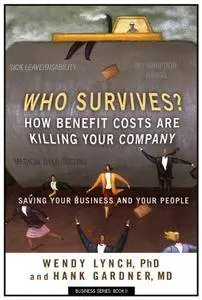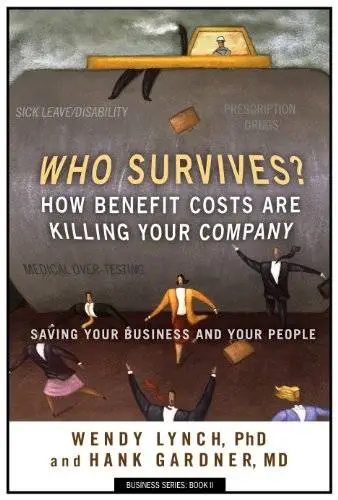Who Survives? How Benefit Costs are Killing Your Company (Business Series Book 2) by Hank Gardner MD
English | 2011 | ISBN: B004LGTRQW | 152 Pages | MOBI | 853.13 KB
English | 2011 | ISBN: B004LGTRQW | 152 Pages | MOBI | 853.13 KB
To compile the research for this book, Drs. Lynch and Gardner led an advanced research team using a unique database: over 900,000 employees spanning as long as ten years. Their research reveals that companies have much more influence over health benefits cost, including health insurance, absence rates, turnover and productivity than business leaders ever imagined. Business leaders can reduce costs while improving worker health and increase business outcomes by aligning their interests with those of workers.
The power of Who Survives? comes from its breadth and its application of economic theory to the typical employee work contract. Make rewards more tangible and more desirable and employees will perform in ways that earn those rewards. Make consequences more tangible and less desirable and employees will perform in ways that avoid those consequences. Money matters, and so does health management and growth of both business and worker human capital.
Systematically, Lynch and Gardner explain how all elements of pay and benefits combine to influence employee behavior. Using a river metaphor, they demonstrate how incentives can combine in ways that “pull” employees in a predictable direction like the current. For example, bonuses, absence policies and training programs all influence productivity.
Other examples include:
• A policy change that produced a 60% decrease in sick leave,
• Specific recommendations leading to 30% lower healthcare expenses,
• Three key policy recommendations to retain the top performers, and
• A specific design flaw that results in twice the rate of disability claims.
Every cause and effect relationship the authors discuss in Who Survives? was tested with multivariate, statistical modeling to confirm that the results apply consistently regardless of the work setting, type of worker, region of the country, pay level, or demographics. While supplemented with anecdotal stories and experiences from their own company, results presented in Who Survives? come from empirical analysis of hundreds of thousands of workers over many years. These are not guesses, they are observed scientific relationships.
Never before has a database like theirs existed –- combining not only health benefits data, but also critical human resources, absence, safety and workers’ compensation, payroll, productivity, health status, turnover and many other factors. Consequently, readers will find unique, effective answers to business challenges not seen before.
Business leaders will discover how actions in one area of their business may impact results in other areas, including increased productivity, an improvement in the turnover rate of top performers, and lower absence rates and medical costs.
Who Survives? provides readers both a conceptual framework as well as specific tools to align their business incentives to achieve greater success, including:
• A framework for explaining the alignment approach
• A series of self-assessments for current policies
• A score for current levels of rewards and responsibilities
• Concrete recommendations regarding
o Compensation
o Sick leave policy
o Health plan design
o Health savings accounts
o Disability insurance
o Training
o Communication of benefits
• Examples of actual results
• A new corporate metric for monitoring performance
• A sample total compensation statement
The evidence presented in Who Survives? gives business leaders a detailed strategy and action plan to improve outcomes that protect workers while improving business rather than reacting to skyrocketing health benefit costs, unpredictable employee turnover, and inconsistent work performance so common in business today.



